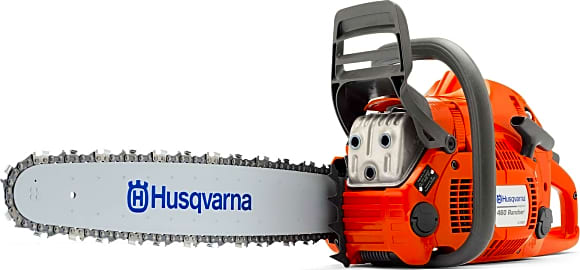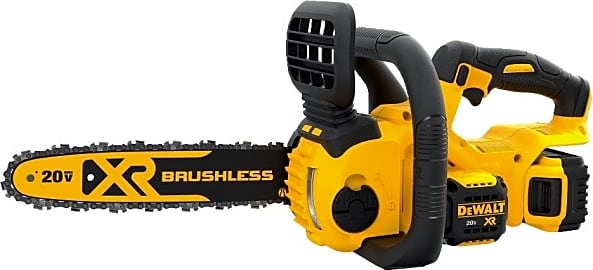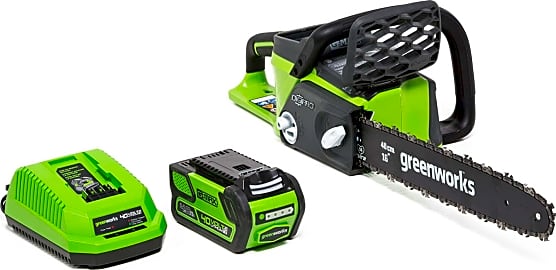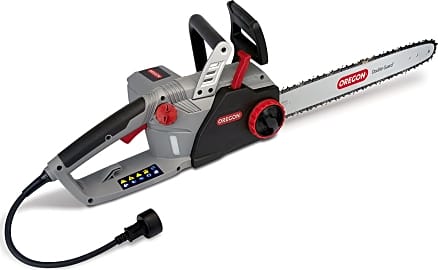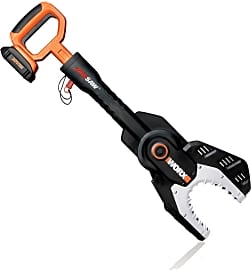The 10 Best Chainsaws

This wiki has been updated 39 times since it was first published in May of 2015. Whether you're just tidying up your yard or are a professional landscaper, you're sure to find something that suits your cutting needs among our selection of chainsaws. We've included models in a wide price range to suit most budgets, and rated them here by their maximum torque, run time, and safety features. Just make sure you're always equipped with gloves and safety goggles. When users buy our independently chosen editorial picks, we may earn commissions to help fund the Wiki.
Editor's Notes
August 26, 2020:
The one major change to our ranking this time around was the replacement of the Black + Decker LCS1020 20V, which was a bit too similar to the Black + Decker LCS1240, and that suffered from some issues with its oiler. That was enough for us to send it packing, and we chose to replace it with the Oregon CS1500, which is now the highest-rated corded option on our list. It's ideal for newcomers to the tools, as its internal sharpening mechanism makes for simple maintenance.
Whether to go with corded, battery-operated, or gas-powered is likely among the most important questions for a chainsaw owner. Despite many advances in electrical power, gas is still going to be the strongest, and as long as you have a modest supply of gasoline, you can take your saw anywhere. Battery-operated are the next most portable, and are enjoyed by homeowners and landscapers alike for their safety and simplicity, but if you're going to be away from an outlet for very long and you don't have enough spare batteries charged, you could run into a problem. And corded, while the least portable, never runs out of power when plugged into a standard outlet. You could also use these with generators in the field if you wanted, but if you're going to be working with gas anyway, you might as well go for the more powerful choice.
And while it should go without saying, always make sure you're properly equipped with safety goggles, gloves, cut-proof boots, and a buddy in case something goes wrong.
May 03, 2019:
While the Husqvarna Rancher managed to hang on to a top three spot, it's interesting to note that it's one of only two gas-powered models on our entire list. It would seem that the industry is getting better at producing powerful enough electric options that more traditional units are beginning to fall out of favor. The models in our first two spots are great examples of this. At number one, you'll find a 36-volt Makita that absolutely rips through whatever you put in front of it. At number two is a Black + Decker model that's essentially the slightly longer version of the B+D on our previous list (seen here at number 5), that boasts double the voltage. The gas powered model leaving our list? The Poulon Pro 50CC, which suffered from starting issues and trouble with warranty service. We also said goodbye to the Remington Limb and Trim, which was a budget option, to be sure, but was also too weak to be considered a serious choice.
The Chains On The Saw Go Round And Round
When I was growing up I never thought, despite its name, that there was actually a chain on a chainsaw.
When I was growing up I never thought, despite its name, that there was actually a chain on a chainsaw. I thought it just had teeth all around a big blade and that the teeth moved somehow. Once I realized there was a chain involved (still a kid at this point), I thought that it was just a chain with no blades, and that it moved so fast it could cut through anything.
Then, I got to use a chainsaw, and it was made very clear to me how it worked before I was allowed to sink it into some wood.
Most of the chainsaws you'll encounter move their chain, complete with its little shark fin-like blades, the way a motorcycle moves its chain. In fact, the systems aren't all that dissimilar. There's a small, gas powered motor that creates a bit of combustion. That combustion moves a piston in a cylinder that's connected to an arm. That arm spins a mechanism through a simple clutch that determines the power delivered to the chain.
The big difference between the motorcycle's power system and the chainsaw's is the final drive. On the bike, that chain is designed to move your rear wheel and push forward a bike that can weigh anywhere between 200 and 2,000 lbs. The chain on the chainsaw doesn't have to move anything, unless you count its teeth. And with all that speed in the blade and all that tasty torque, the cutting is easy.
Safety Can Be Fun, I Promise
Some people can be pretty loose about their chainsaw safety, relying on their thick boots, hard hats, and goggles to keep the worst possible injuries at bay. Me, I prefer to get my confidence from knowledge and the application of proper technique. It's why, for example, I'm not afraid to bowl in front of a date.
Kickback is the phenomenon you see in the picture there, when a chainsaw violently jerks back at its user.
Don't get me wrong, there's a lot of fun to be had wielding a chainsaw. Just remember that there are roughly 36,000 chainsaw injuries annually that require an average of over 110 stitches each.
The shame of it is, it's such an easy thing to manage. It's all about kickback. No, I'm not talking about the chainsaw lobby giving kickbacks to politicians who pass laws that favor their industry. I don't even think there is a chainsaw lobby, but if there was, I wouldn't mess with them.
Kickback is the phenomenon you see in the picture there, when a chainsaw violently jerks back at its user. There's a magic little spot on the front end of every chainsaw that's known as the kickback zone, and if you manage that properly, your safety is all but guaranteed.
Down to the Bone
In the late 18th century, around the early 1780s, a pair of wily Swedish doctors came up with the idea of adhering a series of small cutting surfaces to a chain. That chain was spun by a hand crank, and it was meant for the excision of diseased bone.
In the late 18th century, around the early 1780s, a pair of wily Swedish doctors came up with the idea of adhering a series of small cutting surfaces to a chain.
That's kind of funny, if you think about it. All this talk about protecting the body, and the first chainsaw was actually designed for cutting bone!
The Swedes didn't release their saw until around 1790, and the chainsaw itself was only really used in medical fields until the 1920s.
It was in the 1920s that Stihl released mass-produced versions of electrical and gas powered chainsaws, though these were meant to be operated by two men, instead of one, with controls on one end and an additional handle at the end of the blade arm, in what we now call the kickback zone.
Advancements in the metals used for both the blade arm and the chain allowed for the creation of one man saws, and from there the majority of developments that came about were either in the chain or the motor. Saws got sharper, stronger and more durable, and now they even cut through flying sharks. Hooray!



